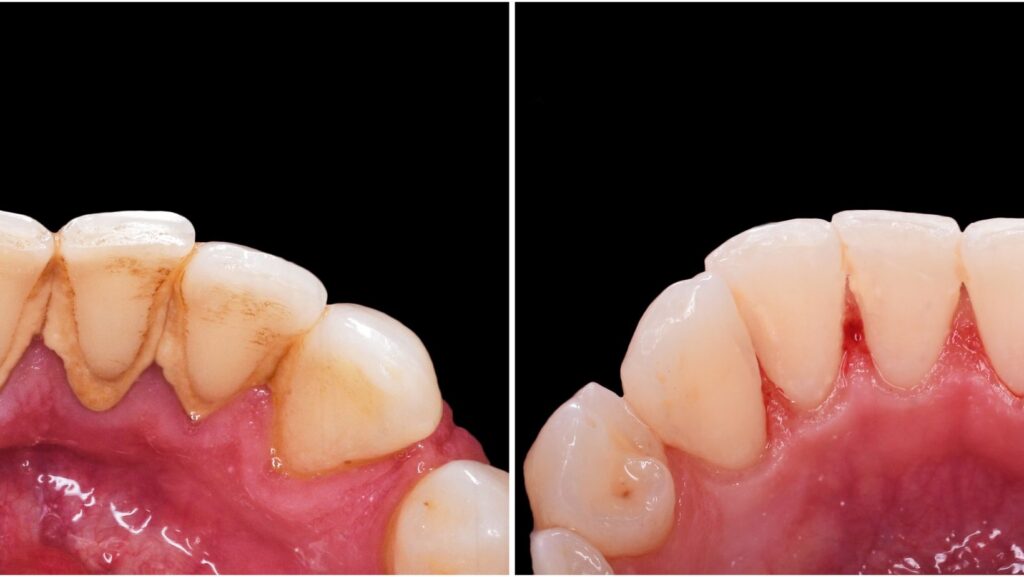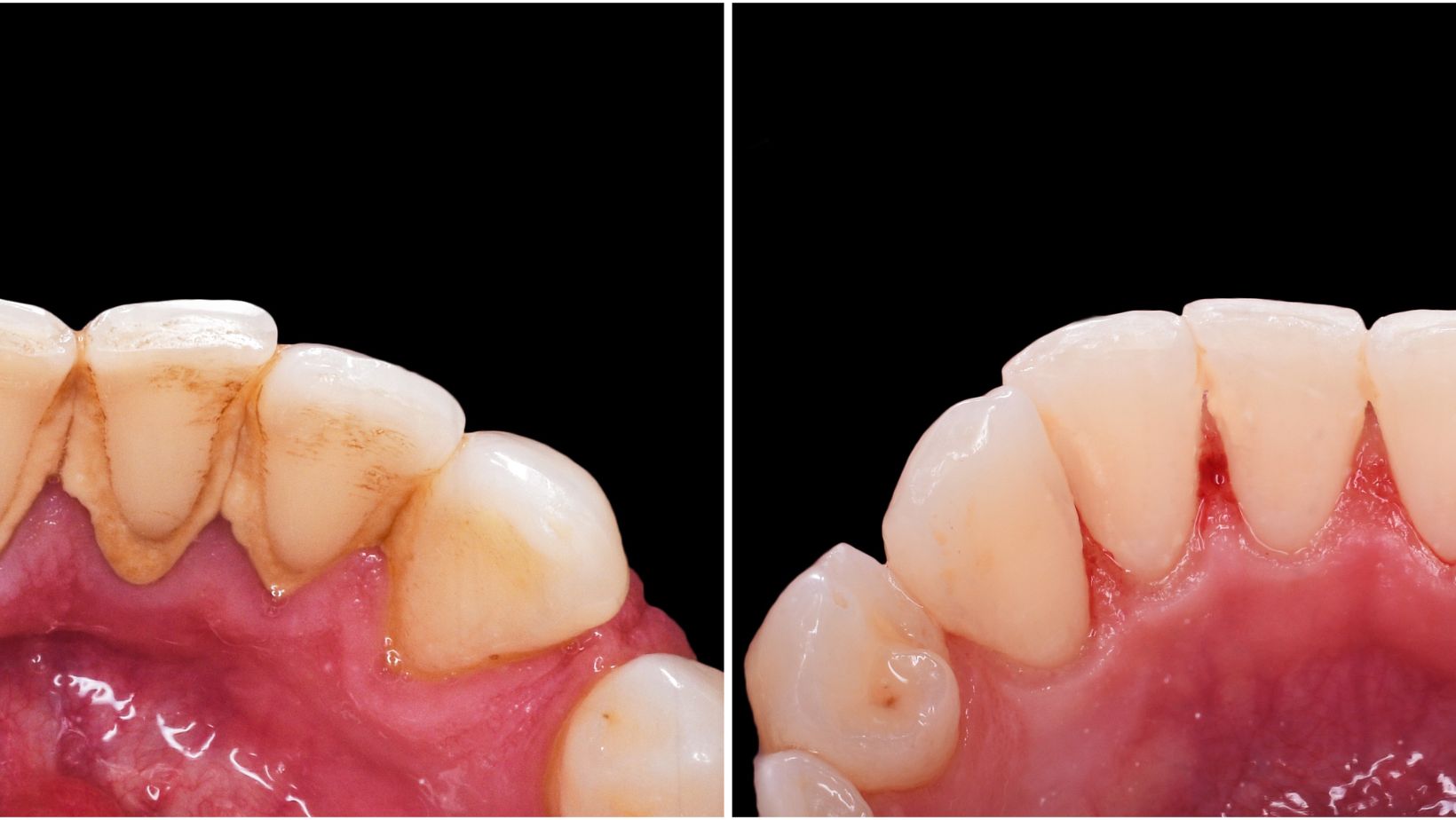
Stop Gum Disease: The Hygienist’s Cleaning Method
The pursuit of a healthy smile often leads us to the dentist’s chair, but the journey to optimal oral health extends far beyond a quick checkup. A significant part of this journey revolves around preventing and treating gum disease, a condition that affects a staggering number of adults worldwide. This article delves into the crucial role of the dental hygienist and their specialized cleaning methods in the fight against gum disease, providing a comprehensive understanding of the process and its significance. The focus is on how you can effectively stop gum disease and maintain a healthy mouth.
Gum disease, also known as periodontal disease, is an infection of the tissues that support your teeth. It ranges in severity from mild gingivitis, characterized by inflamed gums, to periodontitis, a more serious form that can lead to tooth loss. Recognizing the early signs and seeking professional intervention are paramount in preventing its progression. The dental hygienist plays a pivotal role in this process, offering a specialized cleaning method designed to address the root causes of gum disease.
Understanding the Enemy: What is Gum Disease?
Before exploring the hygienist’s cleaning method, it’s essential to understand the enemy: gum disease. This condition is primarily caused by plaque, a sticky film of bacteria that constantly forms on your teeth. If plaque isn’t removed through regular brushing and flossing, it hardens into tartar (calculus), which cannot be removed by brushing alone. Tartar provides a breeding ground for bacteria, leading to inflammation and infection of the gums.
The early stage of gum disease, gingivitis, often presents with symptoms like red, swollen, and easily bleeding gums. While gingivitis is reversible with proper oral hygiene and professional cleaning, it can progress to periodontitis if left untreated. Periodontitis involves the destruction of the tissues and bone that support the teeth, leading to receding gums, loose teeth, and eventually, tooth loss. This is why it’s so important to know how to stop gum disease.
The Hygienist’s Arsenal: Tools and Techniques
Dental hygienists are highly trained professionals who specialize in preventive oral care. Their arsenal of tools and techniques is designed to remove plaque and tartar, and to stop gum disease in its tracks. The specific methods employed depend on the severity of the condition, but typically involve the following:
- Scaling: This involves using specialized instruments, such as ultrasonic scalers and hand scalers, to remove plaque and tartar from above and below the gum line. Ultrasonic scalers use vibrations and water to dislodge the deposits, while hand scalers are used for more precise removal.
- Root Planing: This procedure smooths the root surfaces of the teeth, removing any remaining tartar and bacterial toxins. This helps the gums reattach to the teeth, reducing inflammation and promoting healing.
- Polishing: After scaling and root planing, the teeth are polished to remove surface stains and smooth the enamel. This helps to prevent plaque from adhering to the teeth in the future.
- Irrigation: This involves flushing the pockets around the teeth with an antimicrobial solution to kill bacteria and reduce inflammation.
The Hygienist’s Cleaning Method: A Step-by-Step Guide
The dental hygienist’s cleaning method is a meticulous process designed to thoroughly clean the teeth and gums. Here’s a general overview of what to expect during a professional cleaning:
- Assessment: The hygienist will begin by assessing your oral health, checking for signs of gum disease, such as bleeding, swelling, and pocket depth. They may also take X-rays to evaluate the bone structure supporting your teeth.
- Scaling: Using ultrasonic scalers and hand instruments, the hygienist will remove plaque and tartar from above and below the gum line. This process can be slightly uncomfortable, especially if you have sensitive gums.
- Root Planing: If you have signs of periodontitis, the hygienist will perform root planing to smooth the root surfaces and remove bacterial toxins.
- Polishing: The teeth are polished with a special paste to remove surface stains and smooth the enamel.
- Flossing: The hygienist will floss your teeth to remove any remaining debris and ensure the spaces between your teeth are clean.
- Education: The hygienist will provide personalized oral hygiene instructions, including proper brushing and flossing techniques, and recommendations for products that can help you maintain a healthy mouth. This is critical to help you stop gum disease at home.
Beyond the Cleaning: The Importance of Prevention
While the hygienist’s cleaning method is crucial for treating gum disease, prevention is always the best approach. Maintaining good oral hygiene habits at home is essential for preventing the buildup of plaque and tartar, and to effectively stop gum disease before it starts. This includes:
- Brushing: Brush your teeth twice a day for two minutes each time, using a soft-bristled toothbrush and fluoride toothpaste.
- Flossing: Floss your teeth once a day to remove plaque and food particles from between your teeth, where your toothbrush can’t reach.
- Mouthwash: Use an antimicrobial mouthwash to help kill bacteria and reduce inflammation.
- Regular Dental Checkups: Visit your dentist for regular checkups and professional cleanings, typically every six months.
- Healthy Diet: Eat a balanced diet and limit sugary snacks and drinks, which can contribute to plaque buildup.
- Avoid Tobacco: Smoking and other forms of tobacco use increase your risk of gum disease.
The Benefits of Regular Professional Cleanings
Regular professional cleanings by a dental hygienist offer numerous benefits, including:
- Prevention of Gum Disease: Regular cleanings remove plaque and tartar, the primary causes of gum disease, preventing its development and progression.
- Early Detection of Problems: Hygienists can identify early signs of gum disease, tooth decay, and other oral health problems, allowing for timely treatment.
- Improved Oral Health: Professional cleanings help to maintain healthy gums and teeth, reducing the risk of tooth loss and other oral health issues.
- Fresher Breath: Removing plaque and tartar eliminates the bacteria that cause bad breath.
- A Whiter Smile: Polishing removes surface stains, leaving your teeth looking brighter and more attractive.
The hygienist’s cleaning method is a cornerstone in the fight against gum disease. This method is designed to stop gum disease and is a crucial component of a comprehensive oral health regimen. By understanding the process, embracing preventative measures, and partnering with a dental hygienist, you can take proactive steps toward a healthier, more confident smile.
What To Expect During Your Appointment
When you visit your dental hygienist to stop gum disease, you can expect a thorough and personalized experience. The hygienist will first assess your oral health, looking for signs of gingivitis or periodontitis. They will measure the depth of the pockets around your teeth to determine the severity of any gum disease. The hygienist will then use specialized tools to remove plaque and tartar, scaling your teeth above and below the gum line. This process may cause some mild discomfort, but it is essential for removing harmful bacteria. They will also polish your teeth to remove stains and leave them feeling smooth. After the cleaning, the hygienist will provide you with personalized oral hygiene instructions, including brushing and flossing techniques, and may recommend specific products to help maintain your oral health. This detailed approach is designed to help patients stop gum disease and maintain a healthy mouth.
The Role of the Patient in Stopping Gum Disease
While the dental hygienist plays a critical role, the patient is equally responsible in the fight to stop gum disease. Success requires a partnership between the patient and the professional. This partnership emphasizes the importance of consistent and diligent oral hygiene at home. The patient’s commitment to regular brushing and flossing is crucial for removing plaque and preventing its build-up. Furthermore, attending regular dental check-ups and cleanings allows the hygienist to monitor oral health, catch any issues early, and provide necessary treatments. By actively participating in their oral care, patients can significantly improve their chances of stopping gum disease and maintaining a healthy smile. This collaborative approach is vital for achieving optimal oral health outcomes.
The Connection Between Oral Health and Overall Health
The health of your mouth is intricately linked to your overall well-being. Research has shown a strong correlation between gum disease and other systemic conditions, such as heart disease, diabetes, and respiratory illnesses. The bacteria that cause gum disease can enter the bloodstream and contribute to inflammation throughout the body. Therefore, taking steps to stop gum disease not only benefits your oral health but also contributes to your overall health. By maintaining good oral hygiene and seeking professional care, you are investing in your long-term health and well-being. This holistic view underscores the importance of prioritizing oral health as a key component of a healthy lifestyle. The goal is to stop gum disease and achieve a healthier life.
Additional Treatments and Considerations
In addition to the standard cleaning methods, dental hygienists may employ other treatments depending on the severity of the gum disease. These can include:
- Antibiotics: In some cases, antibiotics may be prescribed to help control the infection.
- Local Anesthetics: For patients with sensitive gums, local anesthetics can be used to minimize discomfort during cleaning procedures.
- Referral to a Periodontist: If the gum disease is severe, the hygienist may refer you to a periodontist, a specialist in the treatment of gum disease.
Understanding these additional options ensures a comprehensive approach to treating and preventing gum disease.
The Future of Gum Disease Treatment
The field of dentistry is constantly evolving, and new technologies and treatments are emerging to improve the way we stop gum disease. Researchers are exploring new ways to diagnose and treat gum disease, including:
- Advanced Imaging Techniques: These techniques can help dentists and hygienists to better visualize the structures supporting the teeth.
- Laser Therapy: Lasers are being used to remove plaque and tartar, and to stimulate tissue regeneration.
- Biologic Therapies: These therapies use the body’s own healing mechanisms to repair damaged tissues.
These advancements offer exciting possibilities for the future of gum disease treatment, and will continue to improve our ability to stop gum disease and help people maintain healthy smiles.
Conclusion: Taking Control of Your Oral Health
Preventing and treating gum disease is an ongoing process that requires a collaborative effort between you and your dental hygienist. By understanding the causes of gum disease, embracing proper oral hygiene habits, and seeking regular professional cleanings, you can take control of your oral health and maintain a healthy, beautiful smile. The hygienist’s cleaning method is a powerful tool in this fight, but it’s your commitment to prevention that will ultimately determine your success. Therefore, make it a priority to stop gum disease by following the guidance of your dental professional and practicing good oral hygiene daily. [See also: The Importance of Flossing for Gum Health]


